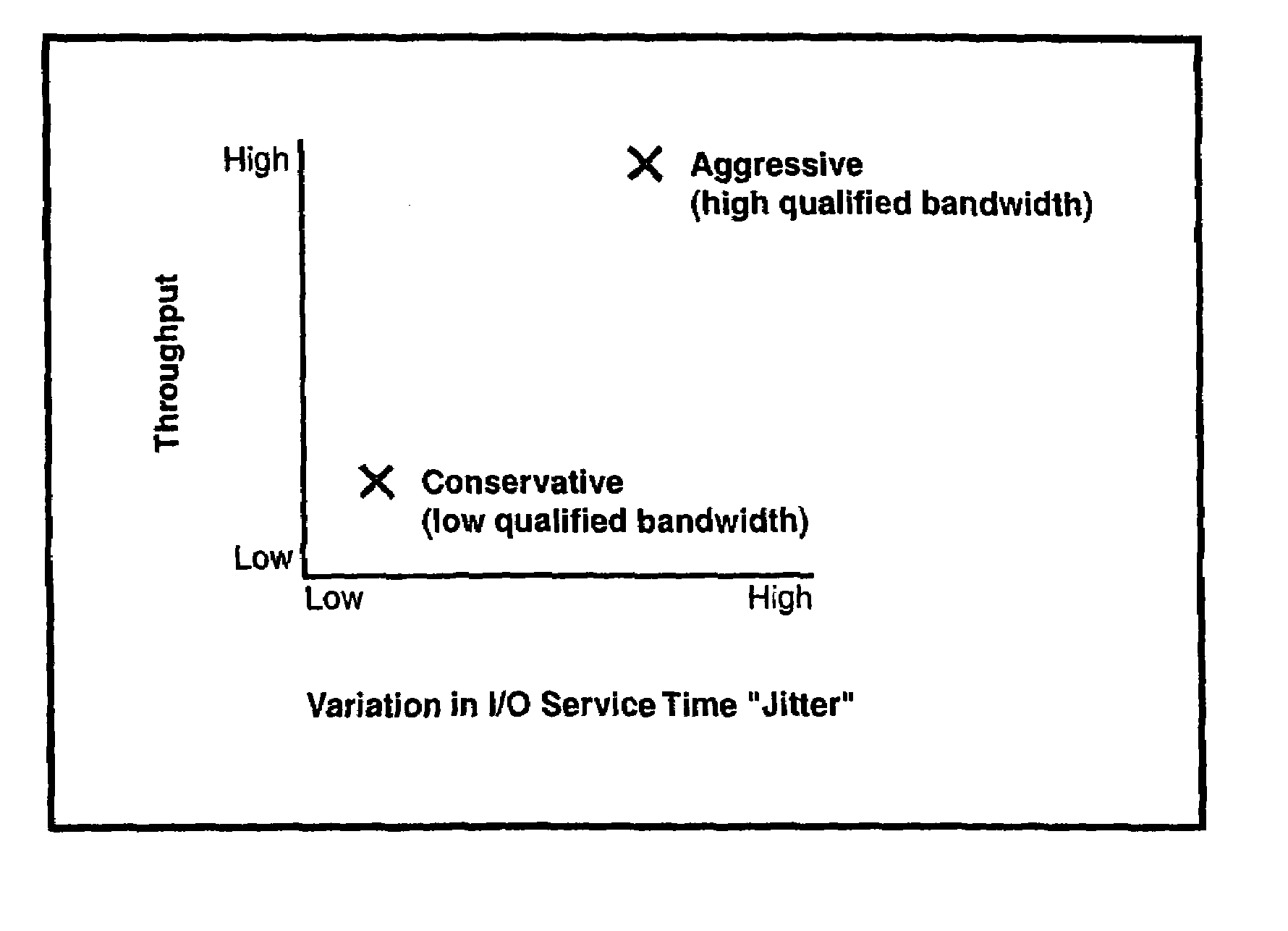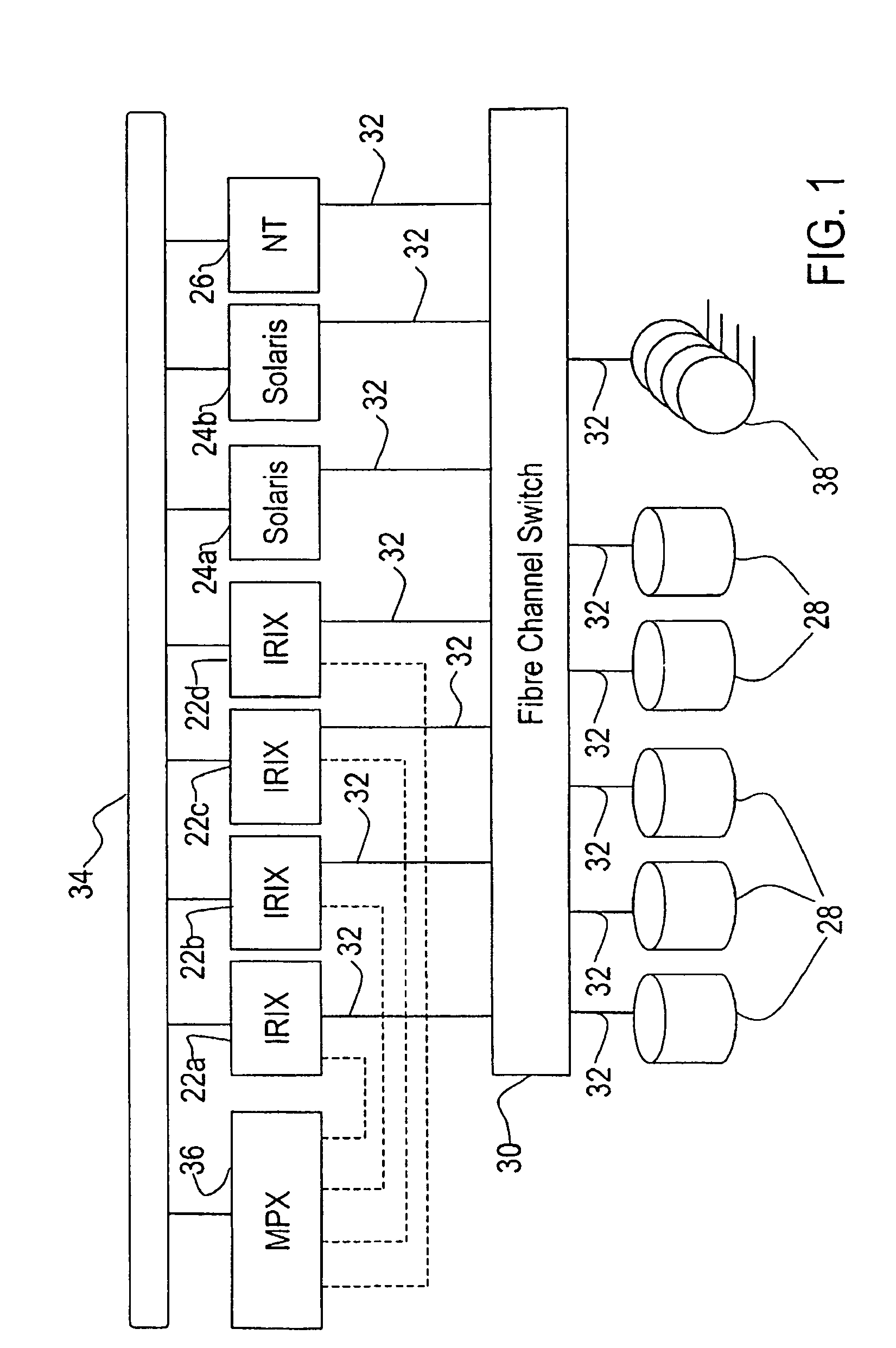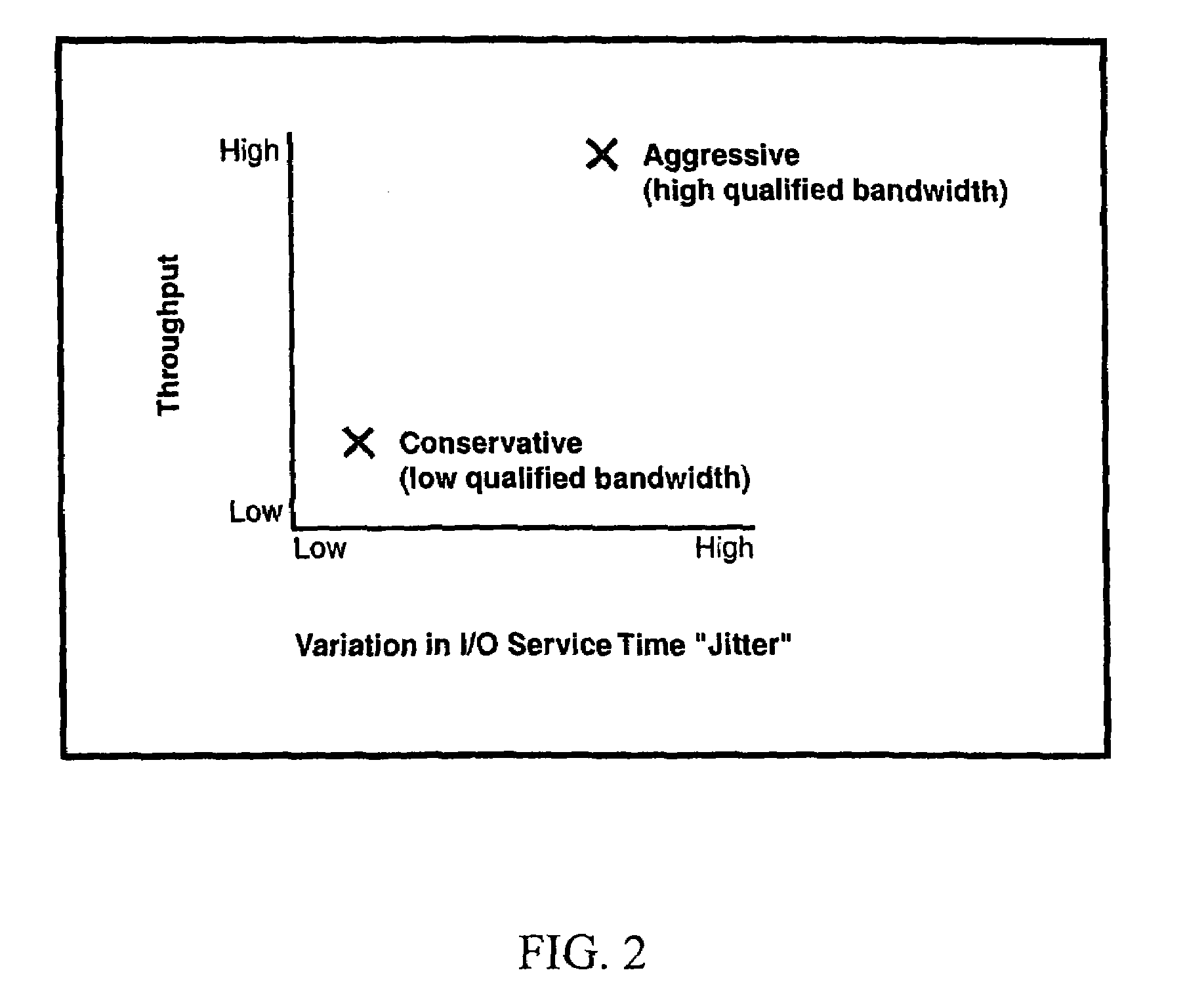Method for empirically determining a qualified bandwidth of file storage for a shared filed system
a file system and bandwidth technology, applied in the field of file system utilisation, can solve the problems of wasting disk space, corruption of data in the volume, and lack of data sharing mechanisms between storage volumes in the san
- Summary
- Abstract
- Description
- Claims
- Application Information
AI Technical Summary
Benefits of technology
Problems solved by technology
Method used
Image
Examples
Embodiment Construction
[0020]A method for controlling utilisation of file storage by a plurality of processes in an exemplary embodiment comprises empirically determining a qualified bandwidth of the file storage and establishing a controller daemon. The controller daemon maintains a record of existing bandwidth reservations, and receives a request for a bandwidth reservation for access to the file storage by a process. The controller daemon determines whether granting the request would result in a sum of bandwidth reservations which exceeds the qualified bandwidth, and provided the qualified bandwidth would not be exceeded by granting the request, the controller daemon grants the request for bandwidth reservation.
[0021]The exemplary embodiment may be implemented in a SAN servicing a cluster of computing systems each running UNIX or IRIX® and a shared file system, such as CXFS and volume manager XVM, both from SGI. Additional details of such an operating environment are provided in US Patent Application P...
PUM
 Login to View More
Login to View More Abstract
Description
Claims
Application Information
 Login to View More
Login to View More - R&D
- Intellectual Property
- Life Sciences
- Materials
- Tech Scout
- Unparalleled Data Quality
- Higher Quality Content
- 60% Fewer Hallucinations
Browse by: Latest US Patents, China's latest patents, Technical Efficacy Thesaurus, Application Domain, Technology Topic, Popular Technical Reports.
© 2025 PatSnap. All rights reserved.Legal|Privacy policy|Modern Slavery Act Transparency Statement|Sitemap|About US| Contact US: help@patsnap.com



